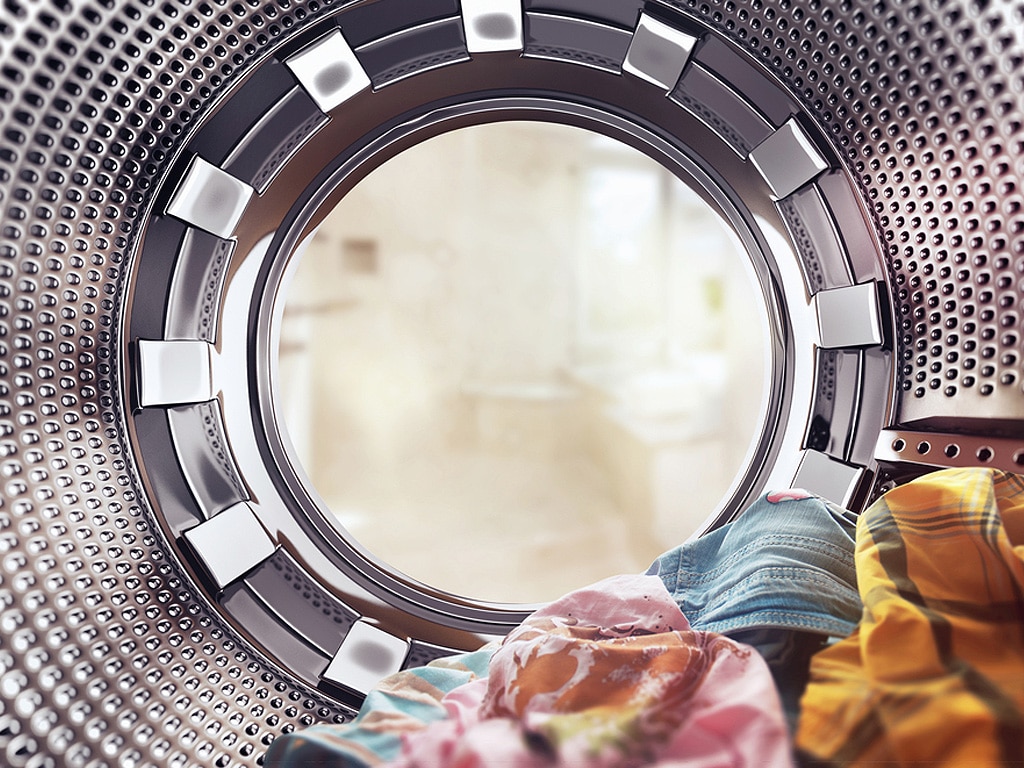If your washing machine won’t drain, it is incredibly annoying. In some cases, it also will stop spinning. Standing water in your washing machine means that your clothes come out wetter than you might like, or even still completely soaked. If your machine is a front loader, you may end up unable to get your clothes out without flooding your kitchen or utility room.

There are four reasons why your washing machine might be full of water when the cycle is over:
- The drain hose is clogged.
- The pump is clogged or broken.
- The lid switch is malfunctioning and not signaling the machine to drain.
- The belt is broken.
The first two are, by far, the most common reasons. So, what can you do about it?
How to Drain a Washing Machine
Bailing out the machine is lengthy and tedious, not to mention hard on your back. There is a better way to drain your washing machine. You should:
- Get a large bucket.
- Turn off power to the machine and unplug it. Secure the power cord to the top of the machine, so you do not get it wet.
For top-loading machines:
- Pull the machine away from the wall if needed. There are three hoses on the back of the machine. You want the gray one.
- For top-loading machines, turn the red and blue knobs on the machine counterclockwise to ensure no water is flowing into the machine.
- Disconnect the drain hose from the pipe, holding it up in the air.
- Direct the hose into the bucket. If water does not drain into the bucket, your problem is the drain hose or pump. If it does, then your problem is in your actual plumbing rather than the machine.
For front loading machines:
- Open the access panel on the front.
- Place a baking dish or similar on a towel in front of the machine.
- Slowly turn the knob of the drain pump filter clockwise. Close it up to empty the container.
- IF your appliance has a drain hose, place the container under the drain tube, unclip it, and unscrew the end cap.
Also, check that the drain hose is not kinked, sometimes that can be the problem.
How to Remove the Clog
If you have a front loading machine, you should clean the filter. Remove solid material such as lint by hand, then rinse with a soft-bristled brush and warm water before replacing.
If the drain hose is clogged, you should be able to unclog it with a plumber’s snake. If you cannot find a clog in the hose, then check the pump. Open the back of the machine. You may be able to see what is blocking the pump immediately. Sometimes it’s an item of clothing, most likely a sock or a piece of underwear.
If you cannot find a clog in either of these places, it’s possible you need a new pump. It’s possible to replace the pump yourself, but you may want to call in a professional, especially if you are not confident you can do the repair or if parts for your machine are hard to find.
If there’s no visible clog, then you are going to need a professional. If water is not draining when you unfasten the hose, then you will need to get the plumbing near the machine tested. Another thing to do is run the machine and listen. A damaged pump or belt will make noises that are not normal for your machine. At that point, it is a good idea to get an appliance repairman.
Again, if you can’t find the clog, it’s time to consider calling a professional. Aladdin Plumbing can help with the worst problems with your washing machine and the plumbing it is connected to. Contact Aladdin Plumbing today so we can check your washing machine and solve the problem quickly.
